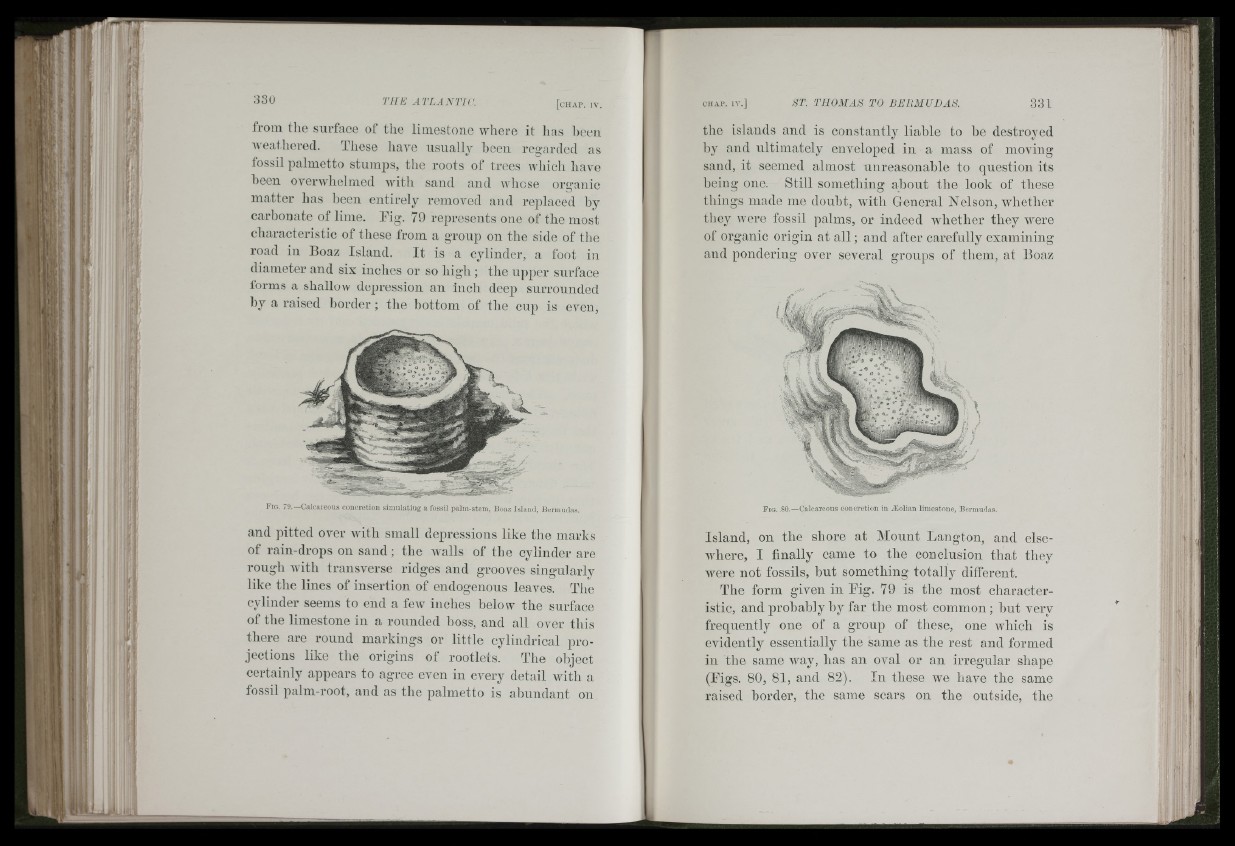
I .
330 THE ATLxiNTK' . [ c h a p . IV.
from tlie surface of tlie limestone where it has been
Aveatbered. These liaA'e usually been regarded as
fossil palmetto stumps, tbe roots of trees wbicli liaA-e
been overAvdielmed Avitb sand and aa'Iiosc organic
matter bas lieen entirely remoA'ed and replaced by
carbonate of lime. Eig. 79 represents one of the most
characteristic of these from a group on tbe side of tbe
road ill Boaz Island. It is a cylinder, a foot in
diameter and six inches or so high ; tbe upper surface
lorms a shallow depression an inch deep surrounded
by a raised border ; the bottom of tbe cup is even.
F ig . r n .—C alciu eo u s c o n c re tio n s iin u ia tin g a fossil p a lin -s tem , Boaz Is la n d , Bcrmuda,s.
and pitted over Avith small depressions like tbe marks
of rain-drops on sand; tbe Avails of tbe cylinder are
rough Avitli transverse ridges and grooves singularly
like the lines of insertion of endogenous leaves. The
cylinder seems to end a feAV inches below the surface
of the limestone in a rounded boss, and all over this
there are round markings or little cylindrical projections
like the origins of rootlets. The object
certainly appears to agree even in every detail with a
fossil palm-root, and as the palmetto is al)iindant on
CHAP. IV .] ST. THOMAS TO BERMUDAS. 331
the islands and is constantly liable to he destroyed
hy and ultimately enveloped in a mass of moving
sand, it seemed almost unreasonable to question its
heing one. Still something about tbe look of these
things made me doubt, Avith General Nelson, whether
they Avere fossil palms, or indeed whether they Avere
of organic origin at all; and after carefully examining
and pondering over several groups of tbem, at Boaz
F ig . ,80.—Ca lc a reo u s c o n c re tio n in iE o lia n linie.stone, Berm urlas.
Island, on the shore at Mount Langton, and else-
AA'here, I finally came to the conclusion that tliey
were not fossils, hut something totally diiferent.
The form given in Eig. 79 is the most characteristic,
and prohahly hy far the most common ; hut very
frequently one of a group of these, one which is
evidently essentially the same as the rest and formed
in tbe same Avay, has an oval or an irregular shape
(Eigs. 80, 81, and 82). In these we have the same
raised border, tlie same scars on the outside, the
11 r
«1 ll
ill
( A
..¡It
ill I.